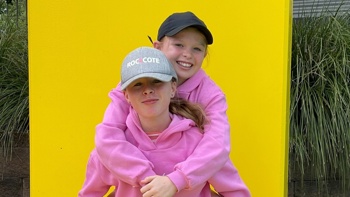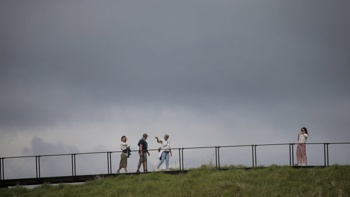The Eiffel Tower grew six metres taller on Tuesday after a new communications antenna was placed at the top by a team of engineers.
This week, a new digital radio antenna was taken up by helicopter and fixed to the top of the Iron Lady. The antenna takes the height of the Eiffel Tower from 324 meters to 330 meters.
It may have seemed like a non-event to the tourists standing around watching but according to the Eiffel Tower company's president Jean-François Martins, it signified the kind of scientific progress that has played an integral part in the 133-year history of France's most famous landmark.
"It's a historical moment this morning because the Eiffel Tower is getting higher, which is not so common," Martins told The Associated Press.
"From the invention of the radio at the beginning of the 20th century to right now, decades after decades, the Eiffel Tower has been a partner for all the radio technology."
When it was first inaugurated on March 31, 1889, the Eiffel Tower was 312 metres high.
It also wasn't met with the popularity it knows today.
Originally built to be a main attraction at the 1889 Paris World's Fair, the structure was initially called the very dull '300-metre Tower' but soon took on the name of its creator, Gustave Eiffel.
From before it was even built, the tower caused controversy, particularly in the art world. However, as time went on, Parisians warmed to its audacious design. More than 2 million people visited it in the first year.
Now, the silhouette is recognised around the world as a symbol for France and in 2019, it had more than 6.1 million visitors.
It wasn't just a pretty tower though.
By making it a location for scientific and technological studies, Gustave Eiffel saved it from being deconstructed after its scheduled 20 years.
Extensive scientific apparatus was installed including barometers, anemometers, lightning conductors. Eiffel even created a meteorology office on the third floor.
Walking around the bottom of the tower, visitors can even see the names of 72 scientists engraved on the tower, honouring the men of science.
Today, its 120 emitters and installations broadcast 45 TV channels and 32 radio stations around the region.
Take your Radio, Podcasts and Music with you









